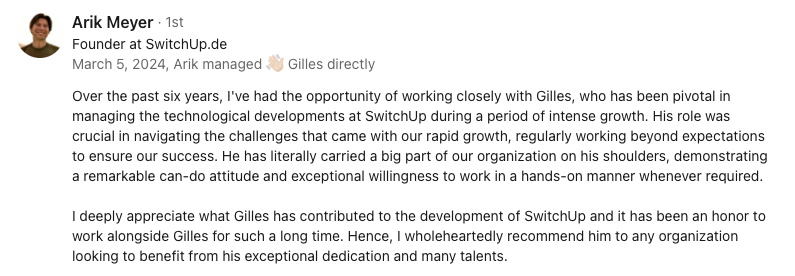Abstract:
This article provides a comprehensive guide on revitalizing communication within virtual teams, stressing the importance of understanding, setting clear expectations, leveraging digital tools, fostering personal connections, and continuously adapting and welcoming feedback. Firstly, it emphasizes assessing communication issues by actively listening to team members’ perspectives without jumping to conclusions. Understanding the root of problems, whether it’s unclear messaging, feelings of isolation, or irregular updates, is crucial. Setting clear expectations follows as the next step. It involves defining preferred communication channels for different types of interactions, emphasizing the importance of regular check-ins, and establishing response time guidelines. The article also highlights the significance of embracing appropriate digital tools to facilitate better collaboration and information sharing, stressing the need for tool compatibility, security, and the avoidance of tool overload. Regular feedback on these tools ensures they remain effective and user-friendly. Fostering personal connections among team members through informal interactions is another key point, underlining that a well-connected team is more likely to collaborate efficiently. Regular reviews of communication strategies are advocated to ensure they evolve with the team and address any emerging challenges, promoting a culture of continuous improvement. Lastly, encouraging an environment where feedback is actively sought and valued is essential. Structured opportunities for feedback, highlighting the positive changes that result from feedback, and establishing a routine part of team interactions reinforce a culture of trust and growth. Incorporating these strategies can significantly enhance virtual team communication, fostering a more cohesive, efficient, and responsive work environment.
Introduction
Imagine a virtual team scattered across the globe, each member nestled in their unique corner of the world, from bustling city apartments to serene country homes. Now, picture their communication slowly unraveling like a finely knit sweater caught on a fence - each thread representing missed messages, misunderstood tasks, and the ever-growing chasm of silence. Humorous as this imagery might be, when communication within a virtual team starts to disintegrate, the consequences are anything but laughable.
Effective communication is the glue that holds virtual teams together. Without it, projects can stall, morale can plummet, and the synergy that once drove innovation can dissipate into thin air. But fear not, for as the Chief Technology Officer and courier of solutions, I've weathered the storm of digital team communication breakdowns more times than I've had hot dinners. The strategies to patch up these communication quilts are manifold, and rest assured, I'm here to guide you through them.
In the pursuit of seamless communication, we’ll explore various strategies that ensure your virtual team remains on the same page—and I'm not just talking about the project management tool you all forgot the login for. We'll look into:
- Understanding Communication Issues: Unraveling the mysteries behind why messages are lost in the digital abyss.
- Setting Clear Expectations: Making sure everyone knows what’s expected, preferably before the next ice age.
- Leveraging Digital Tools: Harnessing the power of technology to bridge the communication divide.
- Fostering Personal Connections: Remembering that behind every screen is a human being, possibly wearing pajamas.
- Adapting Communication Strategies: Tailoring your approach to fit the team’s evolving needs. Because one size does not fit all, especially in the virtual world.
- Valuing Feedback: Creating a culture where feedback is not only welcomed but celebrated with virtual confetti.
Embarking on this journey together, we’ll knit our communication back stitch by stitch, ensuring our virtual teams remain more robust and connected than ever before.
Understanding Communication Issues
As the one steering the ship through the sometimes choppy waters of virtual team management, I've learned that the first step to mending communication breaks is tuning into the frequency of our team members. Actively listening isn't just about nodding along to their words; it's about digging deep into the silence between those words, identifying the static, and adjusting the dials to clear the signal. Let's shed some light on the common gremlins in our communication gadgets.
Types of Communication Glitches
- Unclear Messaging: Imagine sending a message hoping it would land like a perfectly thrown dart, only to find it stuck on the ceiling. This happens when instructions are as clear as mud. "Should I prioritize task A or B?" asks one bewildered team member, embodying the confusion that arises from vague directives.
- Feelings of Isolation: There's a human being on the other side of that screen, who occasionally might feel as forgotten as the last slice of bread. "Sometimes, I feel like I'm emailing a black hole," a team member once shared, depicting the loneliness that creeps in when remote work turns too remote.
- Irregular Updates: Picture a world where updates come as regularly as leap years. "I might as well rely on smoke signals for updates," quipped a colleague during one of our catch-ups, highlighting the frustration that brews from infrequent communication.
Untangling these knots requires a blend of empathy, clarity, and consistency in our communication strategies. By addressing these common issues, we pave the way for a smoother, more connected virtual teamwork experience. After all, a team that communicates well is like a well-oiled machine, albeit one that occasionally enjoys pajama days.
Setting Clear Expectations
Imagine you're orchestrating a grand symphony, but rather than music notes, you're dealing with communication cues. This is the heart of setting clear expectations within a virtual team. I've seen firsthand that when expectations are as foggy as a mysterious thriller novel, the plot of team synergy quickly loses its audience. So, how do we shine a spotlight on these expectations? It's quite straightforward, really.
Choosing Your Channels Wisely
First, declare official communication channels. It's akin to agreeing on a meeting point in a bustling city; without it, you're likely to get lost in the crowd. Whether it’s Slack for instant messages or Trello for project tracking, having a go-to platform prevents important messages from playing hide and seek.
The Symphony of Regular Check-Ins
Next, the importance of regular check-ins cannot be overstated. Think of them as your team's rhythm section, keeping everyone in sync. These could be weekly zoom calls or daily stand-ups. The key is consistency, ensuring everyone stays tuned to the collective efforts and milestones of the team.
Timing is Everything
Last, but certainly not least, establish response time guidelines. It's like setting a tempo; too slow and you lose momentum, too fast and you may burnout. Guidelines such as responding to emails within 24 hours or instant messages within a few hours during work time can prevent the dreaded email backlog blues. Flexibility is crucial, though, as we're all navigating through different time zones and life's unpredictabilities.
In essence, by setting clear expectations around communication channels, check-ins, and response times, we lay down a smooth track for our virtual teams to jazz along. This harmony not only streamlines our collaborative efforts but also amplifies our productivity, proving once again that in the orchestra of virtual teamwork, a little clarity goes a long way.
Leveraging Digital Tools
As the conductor of our virtual symphony, I've come to appreciate the indispensable role of digital tools in harmonizing our communication. However, with a plethora of gadgets and gizmos at our disposal, the art is not just in harnessing these tools but choosing the right ones. Let's talk shop about picking our digital tools with the precision of a gourmet chef selecting ingredients for a signature dish.
Finding the Perfect Fit
- Compatibility with Team Needs: First things first, not every tool fits every team. It's like trying to fit a square peg in a round hole - it simply won't do. I recommend assessing our team's requirements before falling for the flashy features of any software. Does it foster collaboration? Can it streamline our workflow? These are the questions we need answers to.
- Security: In an era where digital snooping is more common than we'd like, the safety of our communications is paramount. Opting for tools that prioritize encryption and data protection is like choosing a sturdy lock for our online treasure chest.
- Avoiding Tool Overload: Ever walked into a kid's toy room and felt overwhelmed by the chaos? That's precisely what we aim to avoid by not cluttering our workspace with too many tools. A minimalist approach often leads to maximalist productivity.
To ensure these digital conduits keep serving our needs, instigating regular feedback sessions is key. It's akin to a routine health check-up for our tools, making sure they're still fit for our purpose. After all, our team evolves, and so should our digital arsenal, ensuring our communication remains as smooth and effective as a well-rehearsed quartet.
Fostering Personal Connections
In the virtual world, where digital dialogues often replace desk drop-ins, cultivating personal connections might seem like a quest for the Holy Grail. Yet, I've found that the simple act of weaving informal interactions into our virtual tapestry can turn a group of remote individuals into a closely-knit team. It's akin to adding a pinch of salt to a dish; the impact on flavor is profound.
The Power of "Water Cooler" Moments
A story comes to mind about Amanda, a team member who always starts meetings with a quirky question, like "What's the weirdest thing you've eaten?" This tradition, as small as it may seem, has transformed our calls from monotonous monologues into vibrant discussions, peppering our work with laughter and shared human experiences. These moments of levity not only break the ice but shatter it, fostering a sense of camaraderie and understanding that transcends professional barriers.
Moreover, it's these personal connections that act as the team's rudder during stormy projects. The bonds we form through such lighthearted exchanges grant us patience and empathy with each other, qualities that are invaluable when navigating the complexities of virtual collaboration. Indeed, a team that laughs together, lasts together, proving that in the geometry of virtual teams, personal connections are the backbone, not just an ornamental flourish.
Adapting Communication Strategies
Just like we occasionally need to reboot our devices or update our apps to keep them running smoothly, our team’s communication methods demand regular refreshes. Imagine if we still clung to sending faxes or using carrier pigeons in this age of instant messaging and video calls! As hilarious as that thought might be, it underscores (oops, I mean 'highlights') the importance of evolving our communication strategies to stay aligned with our team’s growth and shifting dynamics.
Embracing the Winds of Change
Adapting our communication strategies isn't about throwing out the entire playbook every few months. Rather, it’s about fine-tuning our approach, much like how a chef might adjust a recipe based on the ingredients at hand. Whether it's incorporating a new project management tool that better fits our workflow or tweaking our meeting schedules to accommodate different time zones, these adjustments ensure that our communication remains effective and inclusive.
By periodically revisiting and revising our communication strategies, we not only tackle emerging challenges head-on but also nurture a culture of continuous improvement. This proactive stance helps prevent small misunderstandings from snowballing into full-blown crises, ensuring that our virtual team remains a well-oiled machine—capable of both hitting deadlines and sharing a good laugh.
I advocate for scheduling regular 'communication audits'—a time when we collectively reflect on what's working and what's not. This practice not only keeps our strategies fresh but also fosters an environment where feedback is valued and implemented. By doing so, we ensure our team not only adapts to change but thrives in it, proving that flexibility can indeed be our strongest suit in the ever-changing game of virtual teamwork.
Valuing Feedback
Imagine our virtual team as a jazz band, each member playing an integral part in the harmony. Now, consider feedback as the audience applause or constructive critique that makes our next performance even better. This analogy perfectly illustrates why creating an environment where feedback is not just heard but acted upon, is crucial for our virtual teams. It solidifies the foundation of trust and fosters a culture ripe for growth and improvement.
Structured Opportunities for Feedback
- Regular Check-ins: Like clockwork, we ensure that our meetings have dedicated slots for feedback. It's akin to having an "open mic" session where every team member can share their spotlight moment, expressing thoughts on what’s working and what needs tuning.
- Anonymous Surveys: Sometimes, the cloak of anonymity encourages the shyest of pigeons to leave the nest. Periodically distributing anonymous surveys allows us to gather candid insights, ensuring that even the most reserved team member's voice is heard.
- Feedback Workshops: Occasionally, we band together in workshops focused solely on collecting and brainstorming on feedback. It's a bit like a group therapy session for our work processes, albeit with less lying on couches and more actionable insights.
By weaving these structured opportunities for feedback into the very fabric of our virtual team's routine, we create a rhythm where everyone feels comfortable sharing. The act of embracing feedback, analyzing it, and implementing positive changes not only leads to improved performance but also reinforces among team members that they are valued contributors to our collective success. As we continue to tune our communication strategies and processes based on feedback, we ensure our virtual team remains in perfect harmony, ready to face any new tunes the future might bring.
Conclusion
As we've navigated through the art of salvaging communication within a virtual team, it's clear that the harmonious blend of understanding communication issues, setting clear expectations, leveraging digital tools, and fostering personal connections forms the cornerstone of an efficient and interconnected remote workforce. Emphasizing the adaptation of communication strategies and valuing feedback further ensures that our team operates not just as individuals working from various corners of the globe, but as a cohesive unit sharing a common goal.
The transformative power of effective communication cannot be overstated; it is the invisible wire that keeps the kites of our projects flying high, even in the face of adversities. As your Chief Technology Officer, I've seen the splendor of what open, adaptable communication can bring to the virtual table. So, as we continue our journey, let us remember that the magic lies not just in talking but in conversing, not just in suggesting but in listening, and not just in working but in connecting. After all, the essence of a robust virtual team lies in its ability to evolve, adapt, and thrive on the open road of communication. Let's keep the lines open, the feedback flowing, and our spirits high, for in the grand symphony of virtual teamwork, every voice matters, every note contributes to the melody, and every player holds the potential to turn the next tune into a masterpiece.
You might be interested by these articles:
- Navigating the New Era of Remote Work Tech
- Revolutionizing Work with Remote Technologies
- Boosting Security for Remote Startups with EU Compliance





